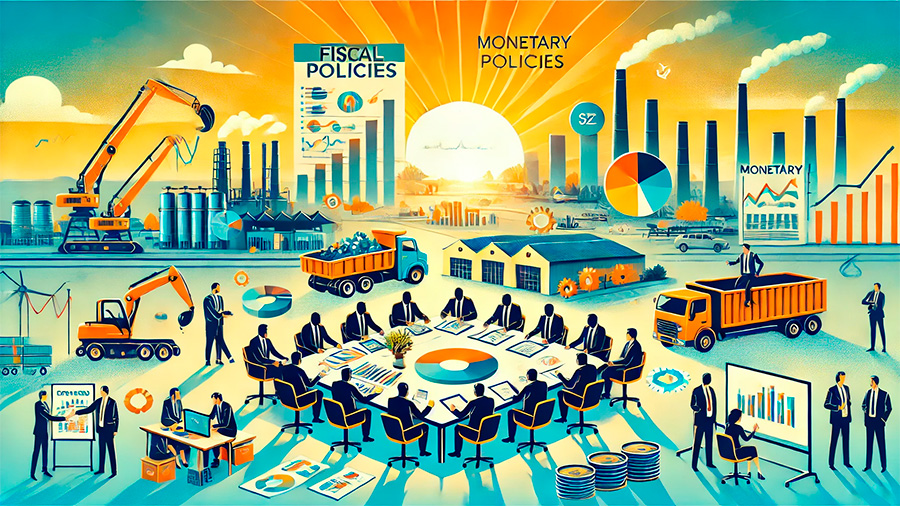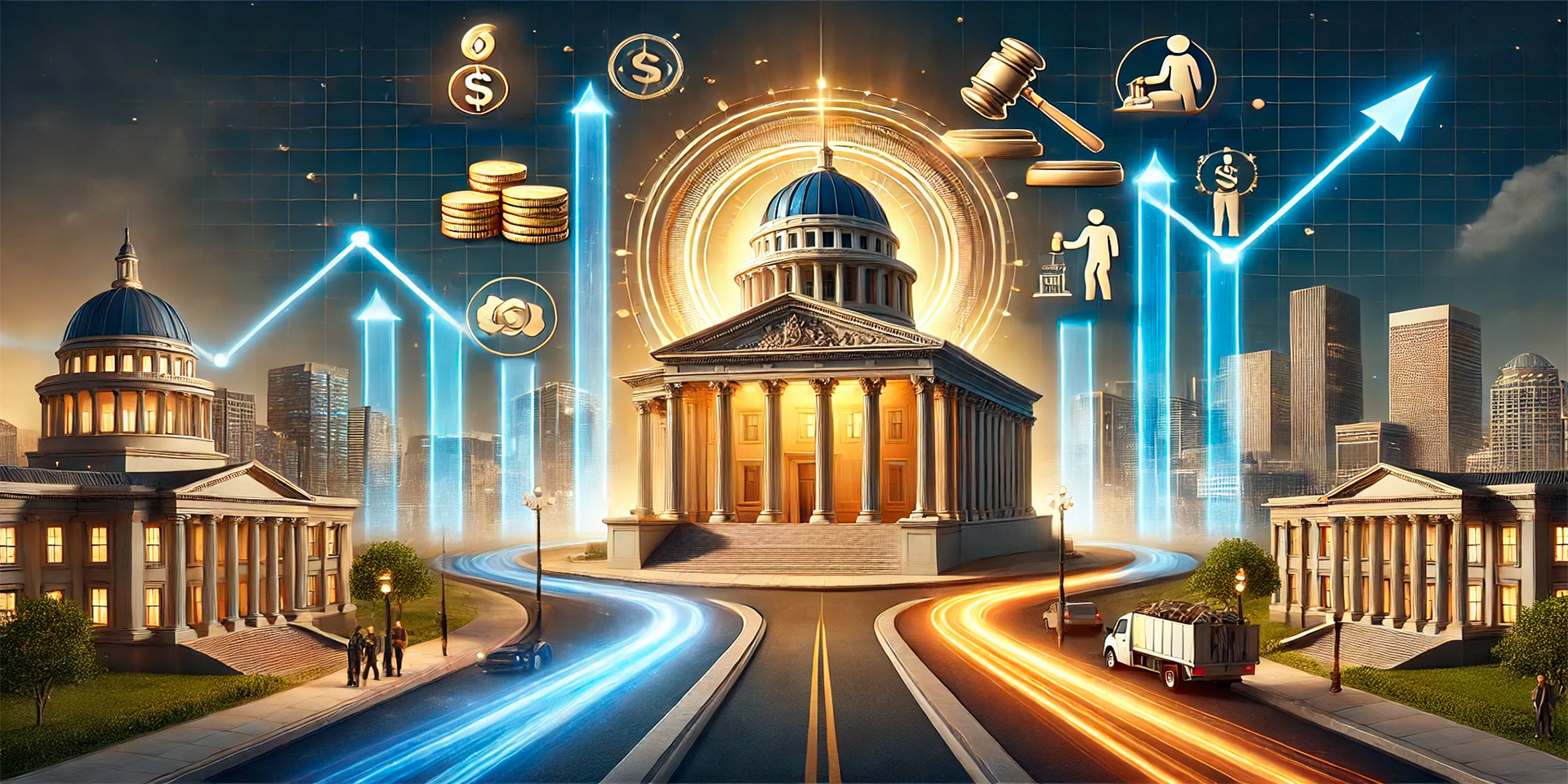Economic crises, whether triggered by labor disruptions, supply chain breakdowns, or financial market shocks, pose significant challenges for governments, businesses, and individuals alike. When a crisis strikes, swift and proactive government actions are essential for stabilizing the economy, maintaining public confidence, and ensuring that essential services continue functioning. This article explores the various steps governments can take during times of economic crisis, focusing on how strategic policies can stabilize economies, mitigate the impact on businesses and households, and lay the foundation for recovery.
Understanding the Impact of Economic Crises
An economic crisis can arise from many causes, including labor strikes, disruptions in the supply chain, or broader macroeconomic factors such as inflation or financial market collapses. Each crisis has its unique challenges, but the results are often similar: widespread job loss, reduced production, inflationary pressures, and a general downturn in economic activity. In these critical times, governments must take immediate action to stabilize the economy, prevent further damage, and set the stage for recovery.
1. Labor Strikes: Disrupting Economic Flow
Labor strikes can bring entire industries to a halt, leading to supply shortages, increased production costs, and rising consumer prices. Whether in manufacturing, transportation, or public services, strikes disrupt not only the industries directly involved but also the broader economy that relies on these services.
Consequences of labor strikes on the economy:
- Supply shortages: Strikes in critical industries such as transportation or logistics can cause significant delays in the supply chain, leading to product shortages and increased costs for businesses and consumers.
- Increased production costs: Disruptions in labor force availability often result in companies paying higher wages to non-striking workers or even hiring temporary workers, increasing overall production costs.
- Decline in productivity: Strikes can lead to reduced output, causing a slowdown in economic activity, particularly in essential sectors such as transportation, healthcare, and education.
2. Supply Chain Disruptions: The Ripple Effect
Supply chain disruptions, whether due to natural disasters, international trade disputes, or other factors, can have far-reaching effects on production, inventory levels, and consumer prices. As production halts and goods become more scarce, inflationary pressures increase, harming both businesses and households.
Impact of supply chain disruptions:
- Higher consumer prices: When goods become scarce due to supply chain disruptions, businesses often raise prices to cover increased shipping costs and reduced inventory levels.
- Decreased business profitability: Many businesses, particularly those in manufacturing and retail, rely on consistent supply chains. Disruptions lead to production delays, loss of sales, and potentially, loss of customers.
- Job losses: Economic slowdowns caused by supply chain disruptions often lead to reduced demand for workers, resulting in layoffs and a rise in unemployment rates.

Government Actions to Stabilize the Economy
Governments have a variety of tools at their disposal to respond to economic crises, from fiscal policies such as stimulus packages and unemployment benefits to monetary policies like interest rate adjustments. By proactively addressing the immediate impacts of labor strikes or supply chain disruptions, governments can mitigate further damage and help stabilize the economy.
1. Stimulus Packages and Economic Support
During economic crises, governments often implement stimulus packages to inject money into the economy. These packages can take many forms, including direct cash payments to individuals, subsidies for businesses, and tax relief measures. Stimulus packages are designed to boost demand, increase liquidity, and keep businesses afloat during difficult times.
Examples of government actions during a crisis:
- Direct financial aid: Governments can provide direct payments to individuals to help them cover essential expenses during periods of unemployment or reduced income.
- Subsidies for businesses: Temporary financial assistance can help businesses retain workers, pay for operating costs, and maintain their production capabilities during economic downturns.
- Tax relief: By deferring or reducing taxes, governments can provide immediate financial relief to businesses and households, helping to prevent further financial strain.
2. Adjusting Interest Rates and Monetary Policies
Central banks play a pivotal role in stabilizing the economy during a crisis by adjusting interest rates. By lowering interest rates, central banks can make borrowing cheaper, encouraging spending and investment, which can help stimulate economic activity. Conversely, during inflationary periods caused by supply shortages, raising interest rates can reduce borrowing and cool down the economy.
How monetary policy helps during crises:
- Lowering interest rates: By making loans and credit more affordable, central banks can encourage consumer spending and business investment, helping the economy recover faster.
- Quantitative easing: In some cases, central banks may engage in quantitative easing, purchasing assets like government bonds to inject liquidity into the financial system.
- Stabilizing the currency: Central banks may also take steps to stabilize the national currency during periods of economic turmoil to prevent devaluation and protect the purchasing power of citizens.
3. Supporting Employment and Job Creation
During a crisis, governments may implement policies to support employment and help workers transition back into the workforce. This can include unemployment benefits, retraining programs, and job creation initiatives. Ensuring that workers remain employed or have access to new opportunities is critical for stabilizing the economy and maintaining consumer confidence.
Employment-focused policies:
- Unemployment benefits: Providing financial assistance to unemployed workers ensures that they can meet basic living expenses while searching for new employment opportunities.
- Job training programs: Governments can invest in retraining programs to help displaced workers gain new skills and transition into emerging sectors, such as technology and green energy.
- Public works programs: Governments may launch public works projects, creating jobs in infrastructure development and contributing to the overall economic recovery.

Long-Term Recovery: The Importance of Strategic Investments
While immediate government actions are crucial in addressing the immediate effects of an economic crisis, long-term recovery requires strategic investments in infrastructure, education, and innovation. Governments must use crisis recovery funds to address systemic weaknesses in the economy, build resilience, and promote sustainable growth.
1. Infrastructure Development
Investing in infrastructure—such as roads, bridges, utilities, and transportation systems—can have a significant impact on economic recovery. Modernizing infrastructure not only creates jobs but also enhances the efficiency and productivity of the economy, laying the foundation for future growth.
2. Education and Workforce Development
As economies recover from crises, investments in education and workforce development are critical to ensuring that the workforce is equipped with the skills needed to thrive in a rapidly changing economy. Governments can invest in vocational training, higher education, and lifelong learning programs to support both short-term recovery and long-term economic stability.
3. Fostering Innovation and Entrepreneurship
Encouraging innovation and entrepreneurship can stimulate economic recovery by creating new industries and job opportunities. Governments can provide grants, loans, and tax incentives to startups and established businesses alike, driving the development of new products, services, and technologies.
Conclusion
Proactive government actions are crucial in stabilizing economies during periods of crisis. From providing financial support to businesses and individuals to adjusting monetary policies and investing in long-term recovery initiatives, governments can mitigate the impacts of crises and foster an environment of resilience and growth. By implementing strategic policies, governments can not only recover from economic setbacks but also create a more stable and prosperous future for their citizens.

